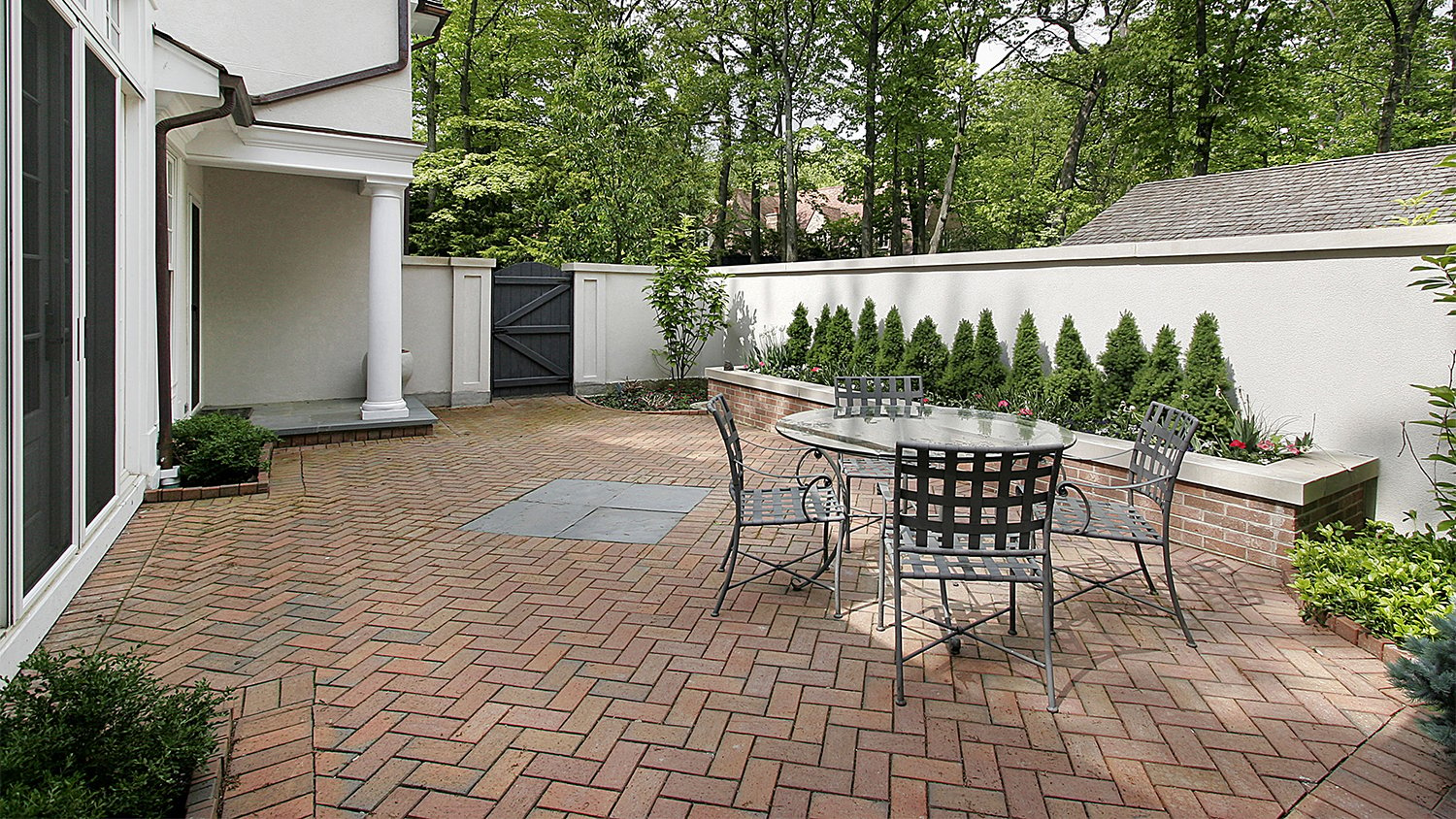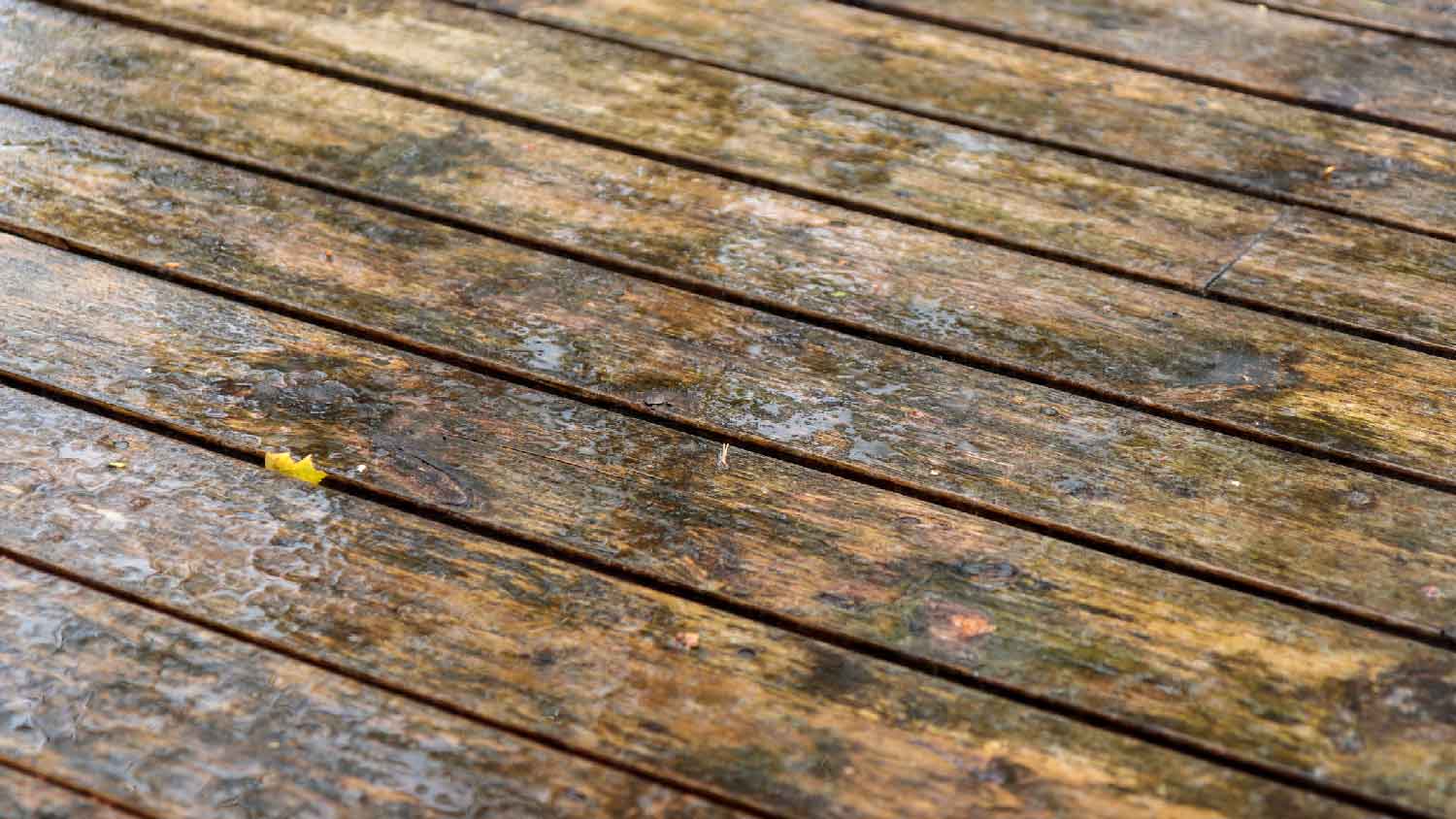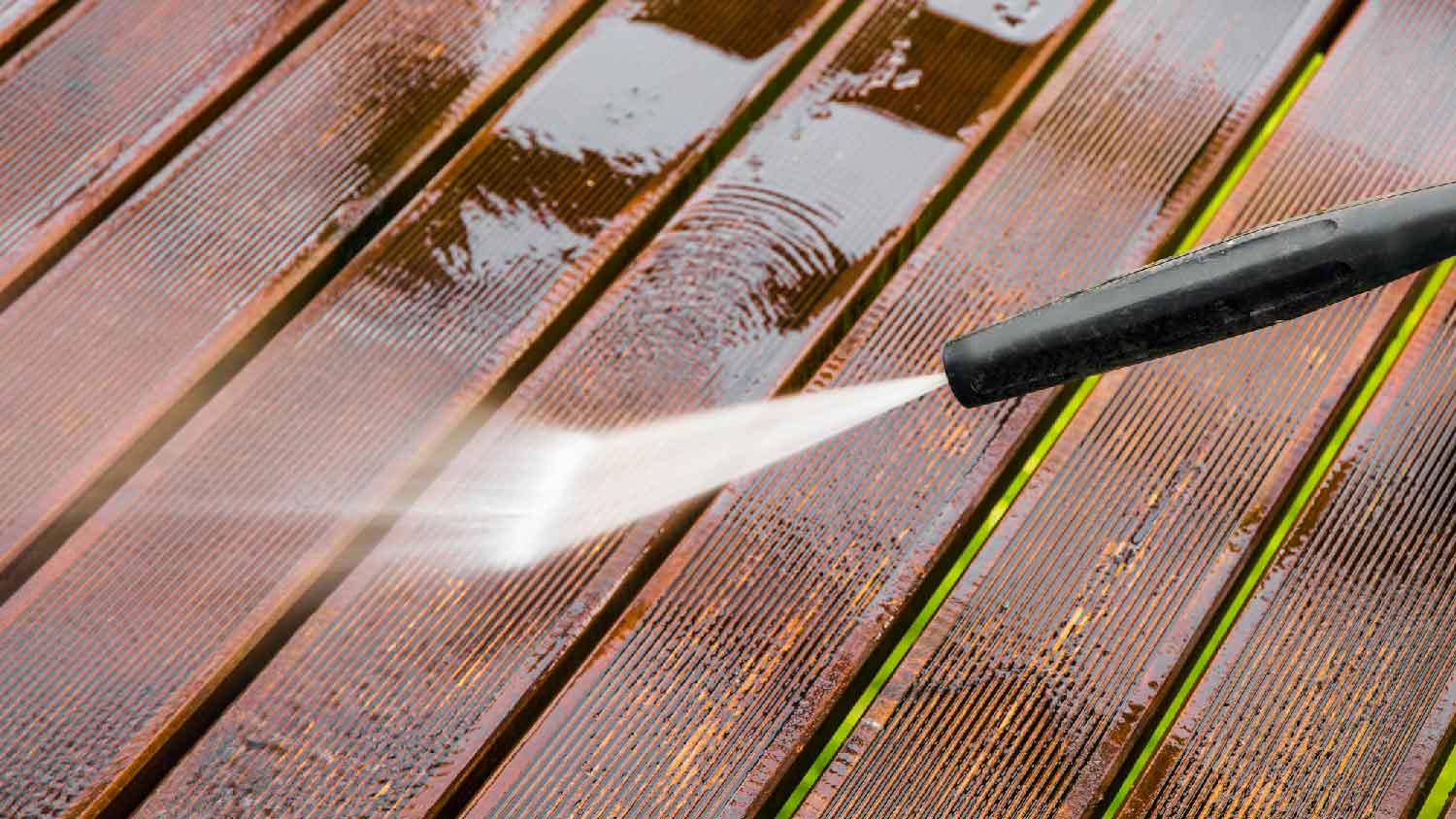
Looking to spruce up your outdoor entertaining area? Learn how much it costs to seal pavers and what factors to consider when estimating your total.
Green is for money and nature, not patios


Patios can turn green over time, particularly those made from wood.
This happens due to an abundance of mold, mildew, or algae, which thrive in shaded, moist environments.
Remove infestations using a vinegar mixture or a dedicated cleaning spray.
Keep your patio clean and well-maintained to avoid it turning green.
A green film coating your patio is a bummer, but there's no reason to let it ruin your day. If you’re wondering why your patio is turning green, it’s a common problem, typically caused by mildew, mold, algae, and moss growth. Luckily, there are some equally common solutions.

Mold and mildew are fungi that thrive on patios and just about anywhere else shaded and prone to moisture. Over time, they can produce the dreaded green patio sheen. While mildew is fairly innocuous, other than being a slipping hazard, mold can represent a serious health risk. Toxic mold varieties make people sick, it smells, and it can eventually rot wood from the inside.
Thoroughly clean the entire patio to eliminate that icky layer of green. Start by removing any loose debris, as these organisms love feeding on detritus, and give the entire surface a good wash—consider using a pressure washer for concrete or wood patios in good shape. Once that's finished, go in with a dedicated patio cleaner or a simple mixture of water and white vinegar. Use a stiff-bristled brush on any stubborn areas. For extreme mold infestations, contact a local remediation pro.
Algae, moss, and lichen are slightly different from mold and mildew because they aren't fungal. However, these photosynthetic organisms also thrive in shaded, damp areas. You'll see a build-up of this stuff after a storm or once the snow clears in spring. While they don’t signal health concerns, all three pose a slipping hazard.
Again, the solution here is a deep and thorough cleaning. Start by removing loose debris. For large outbreaks, go with a pressure washer. Otherwise, a standard garden hose should do the trick. After that, head in with a stiff-bristled brush and a specialized cleaning agent. A mixture of water and vinegar will also work here, as will bleach, depending on your surface material. A mix of soap, baking soda, and hot water will get the job done, but it'll take longer. The same goes for a chlorine-based solution.
Weeds can thrive in just about any condition, even within tiny cracks on a patio. If enough weeds pop up, the patio will have a green hue, though this isn't the same as a patio covered in moss. There are no safety risks associated with weed growth, though it could attract more insects to the area.
Start by removing the weeds. The easiest method here is to simply pull them out by hand, though this depends on the level of growth. Other options include boiling water or chemicals. Once the weeds are gone, seal up any obvious cracks in the patio that allowed them to sprout up in the first place. Pavers are particularly prone to weeds. If the patio is especially old and filled with such cracks, consider using a paver sealer.
Returning a patio to its original color is a good DIY project that only requires some elbow grease. However, there are a couple of scenarios in which it's better to call in a professional. If the patio is overrun with mildew or algae, thus making the entire surface green, contact a local deck repair pro to save yourself a headache. They'll get the job done quickly and efficiently. Given the health concerns, you should also avoid tackling toxic mold on your own.

There are a few ways to prevent a patio from going green. Here are some steps worth considering.
Keep it clean and maintained: Clean the surface of the patio regularly. Clear away debris and eliminate any errant foliage.
Use a dedicated green stain remover: Several products on the market specifically address green stains from organisms like algae or fungus. Give one a try on the patio.
Improve drainage: All of the above organisms require moisture to survive. Check your drainage system to ensure there are no problem areas. If building from scratch, construct the patio on a slight slant. This forces draining water away from the area.
Prune nearby trees: Trim any trees or shrubs that spill onto the patio to prevent debris and a popular feeding source.
Move stuff around: Move furniture and fixtures around at regular intervals. This will not only change the aesthetics but also reduce prolonged shade and increase exposure to sunlight.
From average costs to expert advice, get all the answers you need to get your job done.

Looking to spruce up your outdoor entertaining area? Learn how much it costs to seal pavers and what factors to consider when estimating your total.

Learn the cost of a metal awning for your home. Discover the essentials of installation, materials, and labor, and explore ways to save on your project.

A concrete patio adds valuable outdoor living space to your home. Learn how much a concrete patio costs and which factors affect the project price.

Don’t let patio drainage problems ruin your backyard paradise. Discover the common issues and fixes so you can enjoy your outdoor oasis.

Installing a concrete patio and want to customize? Check out the different types of concrete finishes for patios to choose what works best for your taste.

Poor fitting, age, and damage can make your deck lopsided. Learn what causes unwanted unevenness and how to level a deck with these steps.